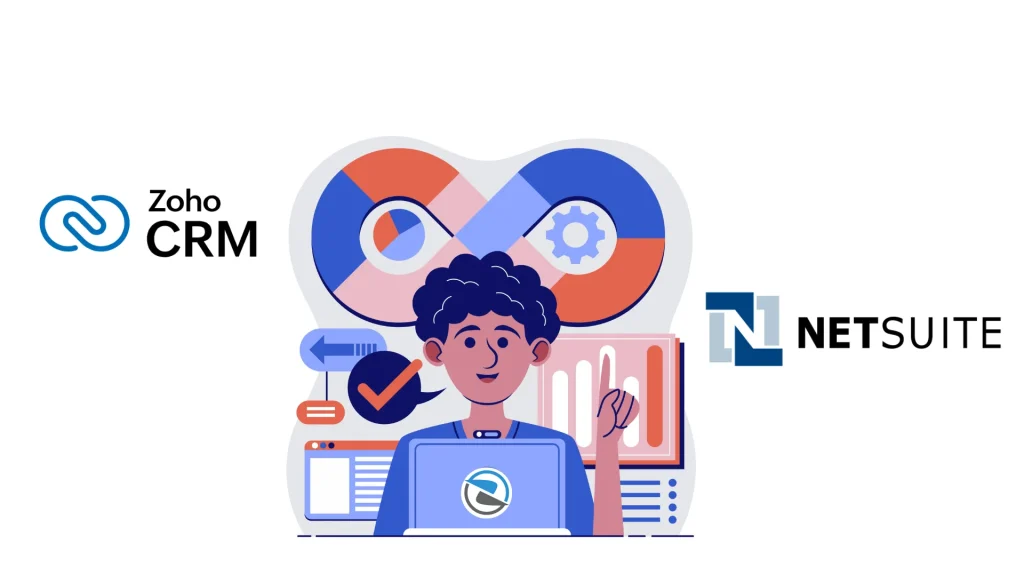Let’s be honest about hybrid work. First off, it’s no longer 2020, and the novelty has worn off. What’s left is a complicated new normal. Some people are fully in the office, some are fully remote, and some are a little of both. And it’s safe to say the most difficult part is not the internet connection, but the connection between your teams, your data, and your processes.
Most likely, your workplace has a hodgepodge of tools and apps that make it work. You have one app for video conferencing, another for chatting, a different one for project management, and countless others for customer management, finance, and HR. In the end, lost context is a major problem. The information is siloed, scattered across a dozen different tabs, and disparate tools make collaboration frustrating.
Businesses today are constrained by the fragmented systems they work with. What you really need in 2025 is not more software, but a system and a unified platform.
This is why solutions like Zoho One make so much sense.
What is Zoho One, really?
“Even if we do not talk about 5G (specifically), the security talent in general in the country is very sparse at the moment. We need to get more (security) professionals in the system”
Consider Zoho One as an integrated OS for your entire business, rather than as an individual application. With Zoho One, you get more than 45 integrated applications for CRM, email, projects, HR, finance, collaboration, and more. They are all designed to work together seamlessly on the same individual platform.
For a hybrid team, it is more than just a convenience; it is a game-changer.
The Three Big Hybrid Work Problems Zoho One Solves

The “Too Many Tabs” Problem: Ending the Digital Whiplash.
Your tools not communicating results in wasted employee effort and increases the mental burden, as they have to switch between apps, copy information, and determine which system is the most recent and correct version of a file or a record.
The solve:
With Zoho One, there is an integrated and unified work surface. A team member CRM system can look at a record and directly chat with a colleague in the same window. They can access a project task linked to a customer all without switching tabs. Context is preserved and work flows unhindered.
The “Out of Sight, Out of Mind” Problem: Creating Real Connection.
In a hybrid model, part of your team may feel remote, and employees in particular may feel disconnected. Lacking cohesion as a team may stifle innovation. Employees may also benefit from interaction in the workplace as spontaneous conversations may ease the “watercooler” moments.
How Zoho One fixes it:
The tools on the Zoho One HR platform which includes Zoho People helps manage employees equitably whether remote, in-office as “Cliq” and “Meet” Zoom allows constant and persistent communication and team collaboration. There is also Connect. It integrates with Zoho Projects and helps managers track employee performance without the need to ‘micromanage’. It will also automate and replicate the company-wide conversations and celebrations to build culture that remote employees need to feel included.
The “Process Breakdown” Problem: Keeping Work on the Rails.
Every business has processes: hiring a new employee, on boarding a new client, or even closing the books monthly. However, processes can become broken when teams are separated and lose visibility. Approvals get stuck, the handoff between departments gets messy, and new employees can get tangled in the ropes.
How Zoho One fixes it:
You can build and automate processes that span departments as all the apps are connected. For example, when a deal gets marked “Closed-Won” in Zoho CRM, it automatically sets up a project in Zoho Projects for the onboarding team, alerts the account manager via Zoho Cliq, and creates an invoice in Zoho Books. It makes the process visible and automated like a highway instead of unpaved rough roads- with everyone traversing it their own way.
What This Looks Like in a 2025 Workday

Picture this: a day in the life of a project manager, Maria.
- 9:00 AM: Maria works from home and, when she starts her workday, she can see all her recent notifications in one dashboard in Zoho One. There’s no need to log into different work apps to see her unread messages in Cliq, overdue work in Projects, and an invoice in Books that needs her approval.
- 10:30 AM: It’s time for a client meeting in Zoho Meeting. Maria seamlessly integrates information to the meeting from Zoho CRM, where she has access to all the client’s information, to make the meeting more productive.
- 1:00 PM: Maria receives a Cliq notification that a team member at the office has finished a critical task, which she can review in Projects. She collaborates in real time, commenting and closing the task right in the chat stream.
- 3:00 PM: She needs to check the remaining the remaining project budget. With the help of Zoho Books, and real time Projects data, Zoho Analytics has created a report that she can use, saving her the trouble of merging spreadsheets.
Her day is fluid. The technology works with her, not against her.
Why a Platform Beats a Pile of Apps Every Time

When looking at a solution like Zoho One, there is always the option of stitching together single-point solutions the user wants, but this presents four different problems as described below:
Increased Security Risk:
More apps will always mean more passwords, greater chance of leaking data, and larger exposed surfaces.
Increased Costs:
All the single subscriptions will increase costs very quickly due to hidden costs.
Data Silos:
When client data is separated from financial data, and placed in different systems, it will be problematic in analyzing the overall business health.
IT Nightmares:
The administrative burden that comes with managing user access, accounts and permissions, and renewals will be tedious and increase frustration.
Having multiple platforms is the antithesis of everything Zoho One aims to accomplish, and it shows in the way everything is structured with a single source of truth; everything is accessible and managed in one space with one security model.
Getting Ready for 2026
The future of work isn’t about choosing between remote work and the office. It’s about developing a fully integrated workspace no matter the location. This requires a firm basis, built for the new work reality.
Zoho One offers that basis. It integrates your people, data, and processes into one cohesive system.
If you’re thinking about 2025, and your current tools feel like friction, then it’s worth thinking about a platform instead of adding more apps. This is the difference between supplying your team with a complete system ready for tomorrow and sending them a box of spare parts and tools.




